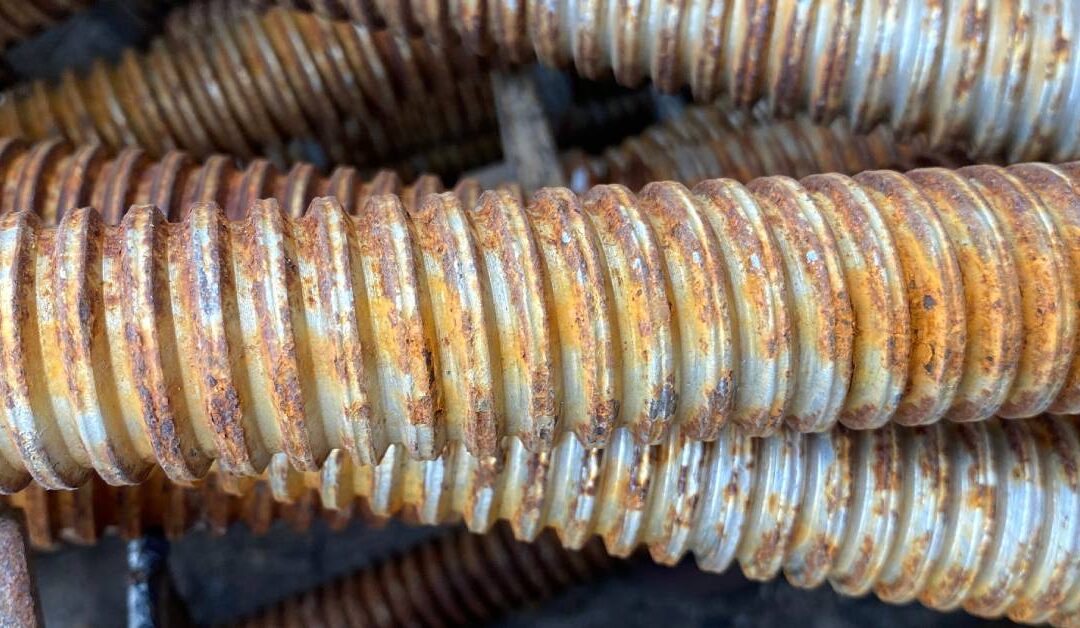Rust and corrosion are terms often used interchangeably, yet they refer to distinct processes that affect materials, particularly metals. Understanding the differences between them is crucial for any individual or industry looking to protect and maintain the integrity of their valuable assets.
Rust specifically pertains to the oxidation of iron and its alloys, leading to the familiar reddish-brown flaky substance we see on metal surfaces. Corrosion, on the other hand, encompasses a broader range of deterioration processes that can affect various materials due to their interaction with environmental factors.
Let’s take a deeper look at the difference between rust and corrosion and how they occur.
The Process of Rusting
Rust is a type of corrosion that specifically affects iron and its alloys, such as steel. It occurs when metal encounters oxygen and moisture, forming a layer of iron oxide on the surface. This reaction is also known as oxidation. When iron or steel is exposed to water or humidity for extended periods, rust forms and begins to eat away at the metal’s surface. This process can be accelerated by acidic substances, saltwater, and certain chemicals, making it a common issue for structures near coastlines or in industrial settings.
The Different Types of Corrosion
Unlike rust, corrosion is a general term that encompasses various processes that can affect different materials. Below are some common types of corrosion.
Galvanic Corrosion
This type of corrosion occurs when two different metals come into contact, creating an electric current that causes one metal to corrode faster than the other. This is often seen in plumbing systems, where copper pipes are connected to iron or steel fittings.
Pitting Corrosion
Pitting corrosion is a localized form of corrosion that creates small holes or pits on the surface of a material. It can be caused by exposure to chemicals, saltwater, or fluctuations in temperature.
Crevice Corrosion
Crevice corrosion occurs in tight spaces or crevices where oxygen and moisture can become trapped. This type of corrosion is commonly found in joints and fasteners.
Uniform Corrosion
Uniform corrosion happens evenly across the surface of a material, causing general thinning and weakening. It can be caused by exposure to harsh chemicals or environmental factors.
Preventing Rust and Corrosion
Both rust and corrosion can be costly and dangerous for industries, as they can lead to equipment failure, structural damage, and potential safety hazards. Therefore, it is essential to take preventative measures to protect against these processes. Some common methods include the following:
- Applying protective coatings, such as paints or sealants, that act as barriers between the metal and its surrounding environment.
- Using sacrificial anodes or cathodic protection systems that attract corrosion-causing elements away from the metal.
- Implementing proper maintenance practices, such as regular cleaning and inspections, to catch corrosion early on.
- Using corrosion-resistant materials for structures or equipment that will be exposed to harsh environments.
Rust and corrosion are two distinct processes that can affect the integrity of materials, particularly metals, and now you know the difference between them. Understanding this difference will help you implement preventative measures to protect against their harmful effects.
If you need a corrosion-resistant 430 stainless steel rod for your equipment, Wieland Diversified has stainless steel bars and rods to meet your specific needs. Contact us today to learn more about our corrosion-resistant stainless steel solutions.

